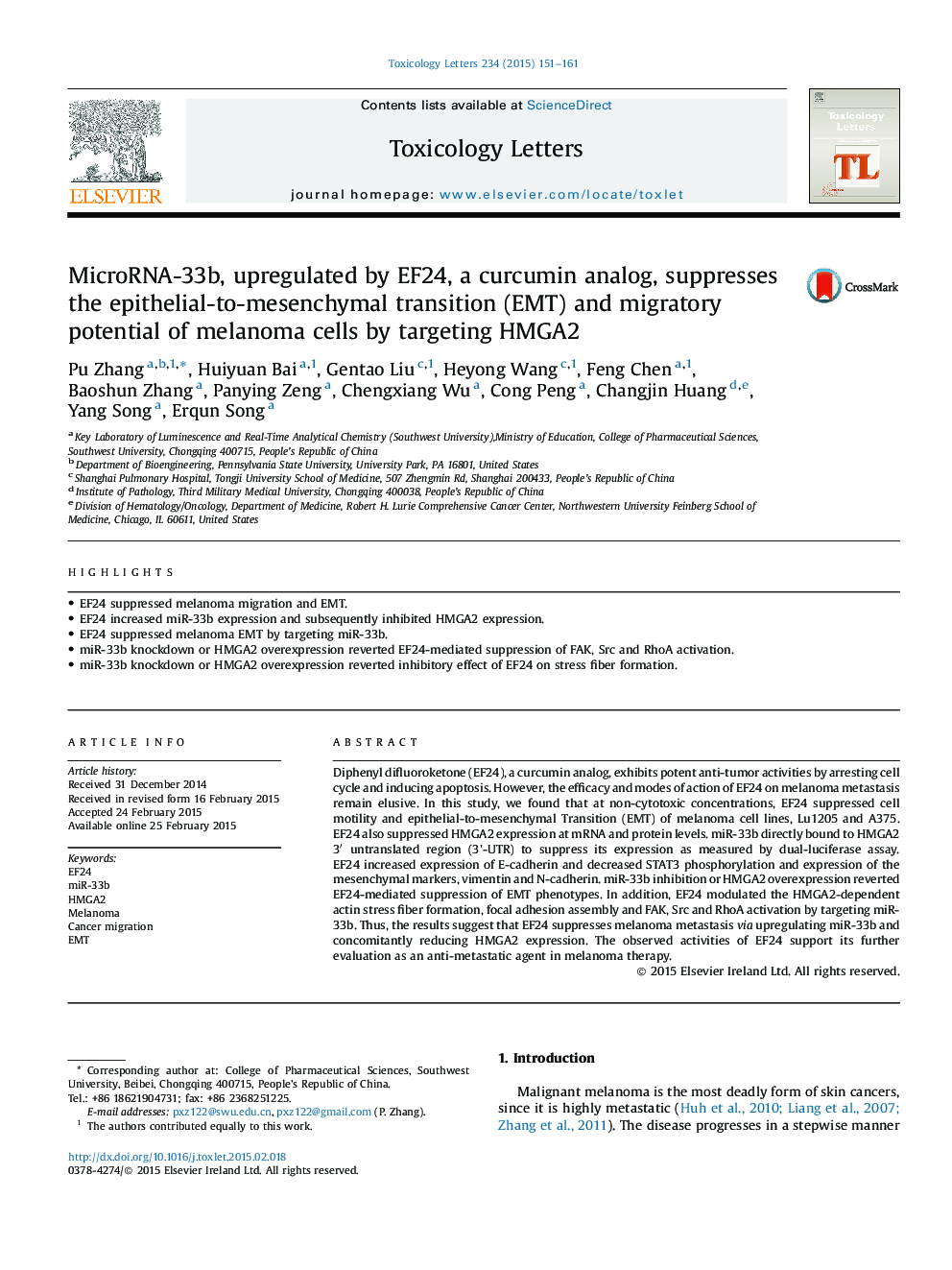| Article ID | Journal | Published Year | Pages | File Type |
|---|---|---|---|---|
| 2598812 | Toxicology Letters | 2015 | 11 Pages |
•EF24 suppressed melanoma migration and EMT.•EF24 increased miR-33b expression and subsequently inhibited HMGA2 expression.•EF24 suppressed melanoma EMT by targeting miR-33b.•miR-33b knockdown or HMGA2 overexpression reverted EF24-mediated suppression of FAK, Src and RhoA activation.•miR-33b knockdown or HMGA2 overexpression reverted inhibitory effect of EF24 on stress fiber formation.
Diphenyl difluoroketone (EF24), a curcumin analog, exhibits potent anti-tumor activities by arresting cell cycle and inducing apoptosis. However, the efficacy and modes of action of EF24 on melanoma metastasis remain elusive. In this study, we found that at non-cytotoxic concentrations, EF24 suppressed cell motility and epithelial-to-mesenchymal Transition (EMT) of melanoma cell lines, Lu1205 and A375. EF24 also suppressed HMGA2 expression at mRNA and protein levels. miR-33b directly bound to HMGA2 3′ untranslated region (3'-UTR) to suppress its expression as measured by dual-luciferase assay. EF24 increased expression of E-cadherin and decreased STAT3 phosphorylation and expression of the mesenchymal markers, vimentin and N-cadherin. miR-33b inhibition or HMGA2 overexpression reverted EF24-mediated suppression of EMT phenotypes. In addition, EF24 modulated the HMGA2-dependent actin stress fiber formation, focal adhesion assembly and FAK, Src and RhoA activation by targeting miR-33b. Thus, the results suggest that EF24 suppresses melanoma metastasis via upregulating miR-33b and concomitantly reducing HMGA2 expression. The observed activities of EF24 support its further evaluation as an anti-metastatic agent in melanoma therapy.
